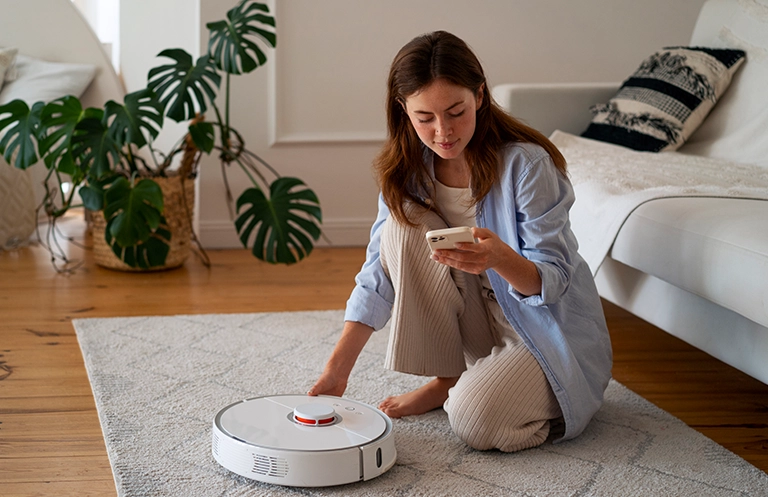The fundamental function of a hearing aid is to provide optimal and comfortable speech quality to the listeners. But in recent times, hearing aids have evolved from single-purpose devices to multi-purpose connected devices. With the additional biosensors embedded, the hearing aid, now, can detect user falls, track physical activities, and measure various body vitals. AI is playing a vital role in enabling these features in hearing aids with either an onboard solution or a connected solution via a mobile app. Let us look at how AI helps to redefine user experience.
What are the challenges the users face?
For hearing aid developers, delivering superior clarity of voice in crowded environments such as restaurants, cafes, and auditoriums is essential to young and dynamic users. Legacy devices have largely failed in these situations to provide the best performance. These devices are not able to restore original hearing due to two major reasons:
- Amplifies all sounds coming to the device including the background noise that confuses or irritates the users.
- Not able to learn and adjust the settings as per noisy and crowded environments.
To isolate speech from noise using signal processing, one of the most effective techniques is the voice activity detector. It identifies the gaps between people’s speech and algorithms and then removes noise from the original sound. This process has the drawback of making the listeners experience musical noise. Musical noise is the type of noise generated in the acoustic noise reduction process. Additionally, the digital hearing aids reduce the noise using beamforming and feedback cancellation. These features also increase the complexity as personalizing them to meet individual needs is a challenge for hearing care professionals.
AI implementation in hearing aids
One of the major challenges for hearing aids is to achieve a natural hearing experience – mimicking the human brain. Machine Learning (ML) with Deep Neural Network (DNN) achieves natural sound by distinguishing speech from multiple incoming sounds. Today, Bluetooth and BLE-equipped hearing aids offer connectivity to mobile and cloud for processing ML algorithms. ML model learns with surrounding sounds based on the environment – restaurant, café, tv room, and auditorium., and sets the program according to it. ML algorithms can detect, predict, and suppress background noise. Still, the main constraint here is the tiny chip used in the hearing aid that is not sufficient to process millions of calculations and run machine learning algorithms.
Real-life applications of ML in hearing aids
- Prioritizes the most often heard voices (family members, friends, colleagues) when you are present with them in busy environments.
- Amplifies sound when someone is speaking from the mask or speaking from a distance.
- Knows your usual routines and tunes the sound program accordingly – watching TV, listening to music, or connected with the video call.
- Tracks physical activities including fall detection and notifies the caretaker; monitors vitals such as blood pressure.
Next-gen. hearing aid systems require the below mentioned essential elements for enabling AI
- Energy-efficient wireless connectivity to access external computing power and run AI algorithms – mobile phone or cloud.
- On-chip AI algorithm processing without the need for external connectivity.
Let us now see the challenges in implementing the above in hearing aids.
The challenge of implementing machine learning in hearing aids
The first and biggest challenge in implementing machine learning in hearing aids is the microchip that is not capable of handling algorithm processing. The current chips being used in hearing aids are not built to process the heavy workload of the ML algorithms. Those chips are made of running usual amplification and other noise cancellation algorithms that are improved over time.
To mimic the brain, a hearing aid should also process the sound received just like the brain. Take an example of word recognition, the human brain has its own neural network of billions of neurons to process specific words. The brain behaves differently when it hears “emergency”, “peace” or “police”. To apply similar behavior, a machine learning model requires millions of calculations to be done in parallel to identify the word, pitch, tone, and pattern. This requires a lot of computing power in the device chip. Unlike other devices like cars, speakers, and cameras, the hearing aid cannot accommodate larger size chips and millions of bits calculations processed.
On the other side, there are multiple challenges of using external computing resources such as mobile or cloud. It requires seamless connectivity in any location to access the AI application. There is a trade-off for solution developers between the battery and compute power for implementing AI in hearing aids.
ML and DNN algorithms require more computing power during training and earlier it was impractical to implement DNNs on hearing aids. With an embedded neural co-processer and on-the-chip processors, DNN can run effectively in a hearing aid. The ultra-low-power SoCs for hearing aids and wearable devices are effective to process AI algorithms at the edge. For example, Atlazo, a US-based company has developed hyper-low powered SoC to implement AI applications at the edge in tiny devices.
Final thoughts
Hearing aids have come a long way from analog to digital to now being AI-enabled. Deep learning algorithms are transforming the hearing aid industry with exceptional benefits of speech enhancement and noise reduction – offering automated personalization based on the user environment.
eInfochips has expertise in building edge AI-based solutions for low-powered consumer and wearable devices. We are the go-to-partner for global customers to design their ML-based solutions leveraging our engineering capabilities in POC, architecture and model development, model training, tuning, and porting. We have developed and delivered solutions utilizing computer vision and natural language processing (NLP) technologies that helped our clients to improve customer experience in diverse industries.
Contact our expert today to know more about our machine learning services.













